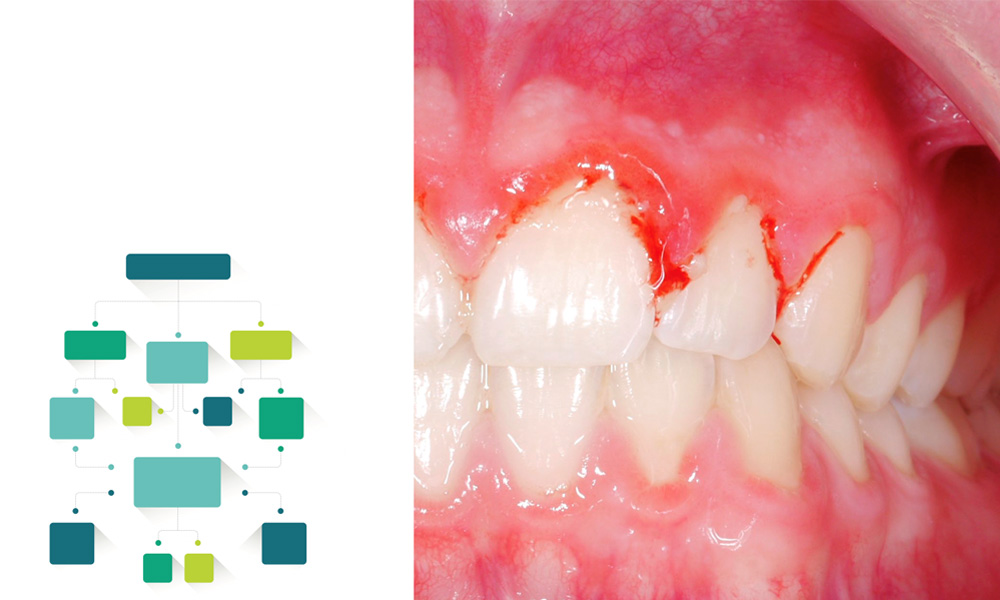Periodontal diagnosis made easy
PD Dr. Kristina Bertl, PhD MSc MBA
2018 saw the publication of a new classification for periodontal and peri-implant diseases, containing several new key elements compared to the classification from 1999. This meant that new points now have to be observed when diagnosing these diseases. However, it naturally takes some time to fully internalise these points in order to make the correct diagnosis quickly and unequivocally. It therefore follows that any simple reference tool that could be created to help with this process would be a practical and significant help in everyday clinical practice.

A research group from Thailand (Pakdeesettakul et al. 2022) looked at this subject and investigated whether a relatively simple flowchart would make it easier to implement the new classification for periodontal diseases. In this study, 25 case scenarios (cases with periodontal health, gingivitis and periodontitis) were selected, which had previously been classified as ‘clear-cut’ cases by a group of experts. These case scenarios were then assessed by a total of 152 participants, who were dental students, trainee periodontists and experienced periodontists. All the participants assessed all the cases once using just the publications about the classification to help them and once using an additional simple flowchart.
In the analysis, correct classification as ‘periodontally healthy’, ‘gingivitis’ or ‘periodontitis’ was evaluated, as was the correct full classification (e.g. stage III, grade B periodontitis). This revealed the following interesting results.
- Correctly classifying each case as ‘periodontally healthy’, ‘gingivitis’ or ‘periodontitis’ worked well with and without the flow chart; an increase in accuracy when using the flowchart was seen only in the group of dental students.
- An additional flowchart helped the participants to make the correct full diagnosis much more frequently, especially in cases of periodontitis.
- Participants’ level of experience was also a factor in assigning the correct full diagnosis; trainee periodontists and experienced periodontists achieved better results here than dental students.
- Participants stated that the flowchart gave them more self-confidence when assigning the full diagnosis.
In summary, establishing a new classification system in everyday clinical practice is always something of a challenge, but it is also feasible. Small reference materials, such as this flowchart, can be a really good resource that can be easily displayed in the treatment room. And finally, establishing a new classification is also a question of experience and of practice.
You can also find further information about the new classification on these pages:
References
- Suphakan Pakdeesettakul, Orawan Charatkulangkun, Attawood Lertpimonchai, Hom-Lay Wang, Pimchanok Sutthiboonyapan. Simple flowcharts for periodontal diagnosis based on the 2018 new periodontal classification increased accuracy and clinician confidence in making a periodontal diagnosis: a randomized crossover trial. Clin Oral Investig. 2022 Dec;26(12):7021-7031. doi: 10.1007/s00784-022-04662-z. Epub 2022 Aug 9.


Commenti